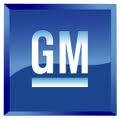 by Michael Tarsala
by Michael Tarsala
General Motors remains an investment non grata.
It’s a $30 billion company. It’s a household name in the U.S. and most parts of the world.
Yet not even one of the more than 160 investment models on the Covestor platform hold GM as even a 3% position. In comparison, four different managers hold a 7% or larger position in GM’s largest domestic rival, Ford.
One of the main GM drawbacks is its government ownership overhang. The U.S. government owns 30% of GM’s common shares. The Canada and Ontario governments together own 8.4%.
Eventually, those governments will want to sell their large stakes.
Investors know that. So there is a built-in fear that any big rise in GM’s share price could invite a wave of government selling that could knock GM’s stock price back down again.
GM shares were re-floated in the public markets in 2009 at $33 a share. It is now trading below $20. Prices peaked near $40 in January 2011, but have since been sliced in half, aided this year by worries of a global economic slowdown.
Additional investor concerns about GM include its losses in Europe, declining market share in the first half of the year, and the series of recent executive changes.
Not every investment manager hates it, at least.
 Libardo Lambrano has about 1.6% of his Dividend Paying Large Caps model invested in GM shares. He likes the stock as a long-term play and thinks that its nearly 30% slide from its year peak in February could soon end.
Libardo Lambrano has about 1.6% of his Dividend Paying Large Caps model invested in GM shares. He likes the stock as a long-term play and thinks that its nearly 30% slide from its year peak in February could soon end.
“It’s not going to go down further, with U.S. sales growing the way they are,” he opined. “The continued pickup in U.S. auto sales should support the stock until the economy eventually recovers in Europe. I think it’s well positioned for when the global economy begins to grow again.”
He adds that GM, Ford (F) and PACCAR (PCAR) all should benefit from a strong replacement market for commercial vehicles.
Lambrano says that with a forward PE ratio of less than 5 times, and a 1 times EV to EBITDA multiple, he’s not sticking his neck out on the stock.
GM’s earnings on Thursday were being seen as either a glass half empty, or half full story.
From the half-full perspective, Lambrano notes:
- The company continues to generate cash; it added $1.7 billion from the automotive business in Q2.
- Four out of the company’s five global business segments were profitable.
- GM now can claim 10 straight quarters of profitability – something it had not achieved in more than a decade.



